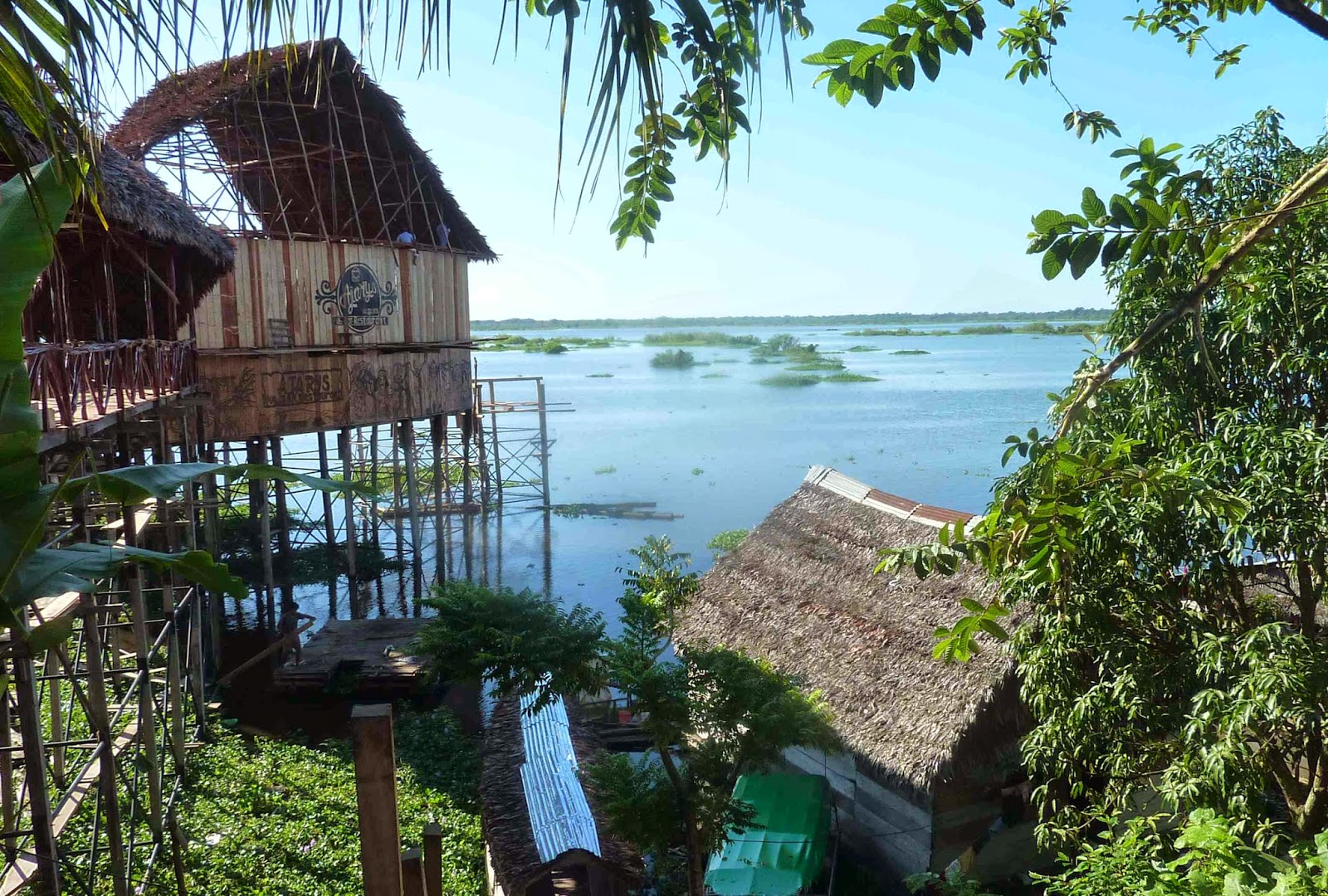.jpg) |
| Coming into Iquitos by air!! |
 |
| Hectic Iquitos - Motokars lining up at a junction |
 |
| Iquitos is on the edge of the Amazon |
 |
| Iquitos has spread onto the water! |
 |
| This is where I was heading! |
 |
| On my way upriver! |
.jpg) |
| The Lodge |
 |
| Amazon sunset |
 |
| Tranquil Taprira Creek - just off the main Amazon River |
 |
| Morning! |
 |
| 3 toed sloth deep in the jungle |
 |
| Squirrel monkey high in the trees above the lodge |
 |
| Iguana sunning itself |
 |
| The snake just before it jumped in the canoe! |
And then there were the creepy crawlies - tarantulas, millipedes, huge crickets and of course lots of mosquitoes!
 |
| Tarantula seen on the night walk |
Even when there were no animals in view the jungle itself was fascinating - it's the end of rainy season here and the land is flooded - trips that in a few months time will be walks are now canoe trips. The jungle was a profusion of huge trees and vines - some if them an instant water source as you can see. The surface of the water was often choked with plants which made canoeing hard work
 |
| I have to admit my guide did most of the hard paddling! |
 |
| Canoe parking deep in the jungle |
 |
| The main Amazon River |
 |
| Small lakes form in the Amazon often with giant lily pads that can support 40kg in weight! |
 |
| Wearing my jungle backpack that we used to gather food! |
 |
| Backpack contents! |
 |
| When you get thirsy just cut a vine and drink - but be sure to cut the right one- only the Cat's Claw Vine is safe! |
 |
| Logging the Balsa |
 |
| One man and his log! |


Making up the raft and guide Ricardo testing it
 |
| The cheap option back to Iquitos! |


There are several local indigenous communities living along the river - sometimes only in groups of 4 or 5 families. In this part of the Amazon the tribe members don't live in a traditional manner Less and less families are choosing to live this way due to seasonal flooding which year on year is worsening
 |
| Local Community |
 |
| Football is strictly seasonal here! |
 |
| Belen Market |


Food but not as we know it!!

 |
| Floating City of Belen |
 |
| Banana Man! |
 |
| Traditional Wear in the Musem |
 |
| Luckily the tribes have now stopped the practice of poking out your eyes with this special stick! |
All too soon it was time to pack up my bag again for a last few days in Bogota....
Comments? Questions? Suggestions? email me at iain.mcallister@googlemail.com